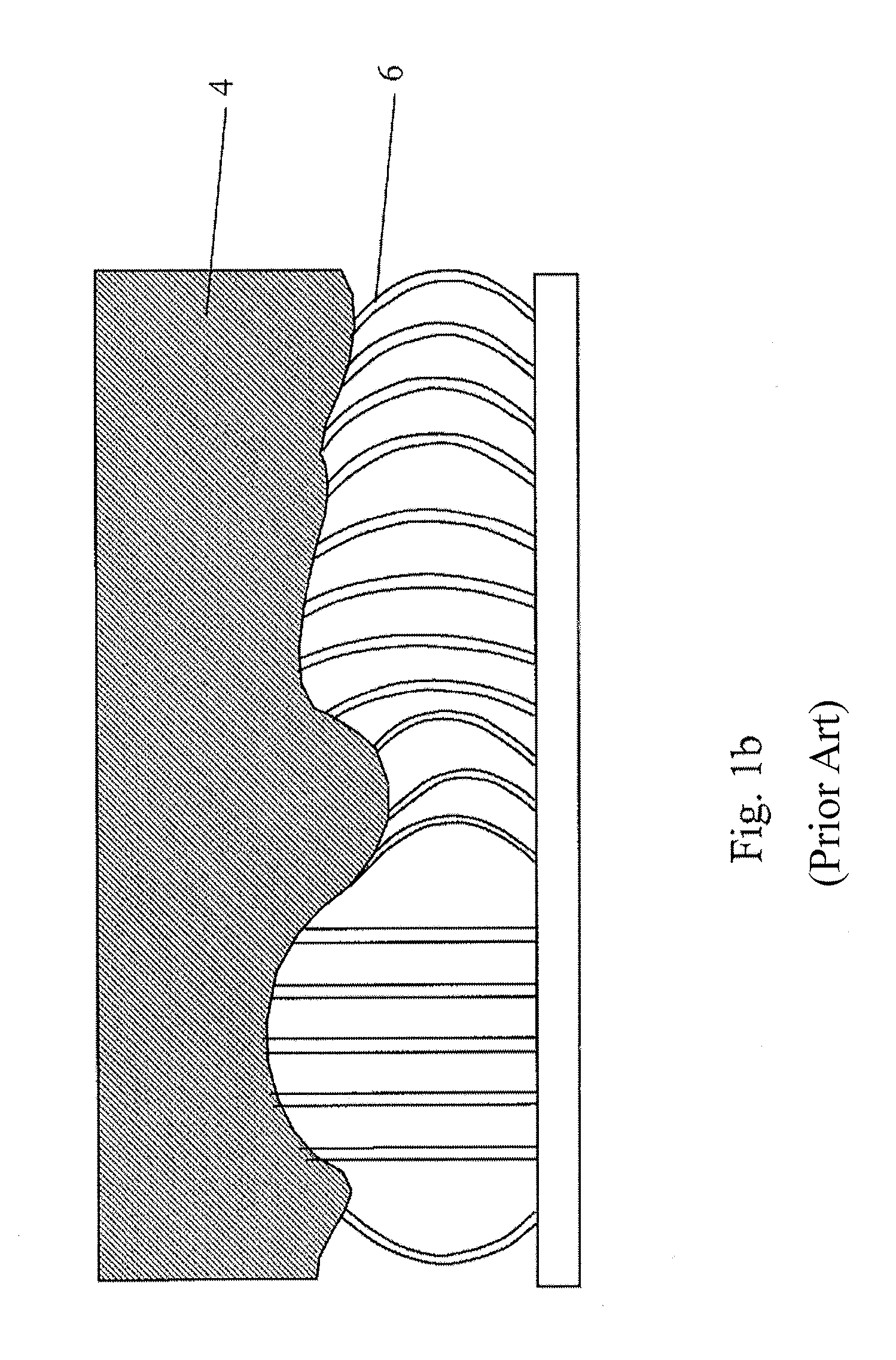Methods of forming dry adhesive structures
a technology of dry adhesives and structures, applied in the field of dry adhesives, can solve the problems of ineffective surface adhesion of simple pillar structures, inability to efficiently and controllably produce hierarchical structures with specialized tips, and high cost of microfiber fabrication methods described above, so as to improve interfacial resistance to separation, uniform distribution of applied stress, and increase contact area
- Summary
- Abstract
- Description
- Claims
- Application Information
AI Technical Summary
Benefits of technology
Problems solved by technology
Method used
Image
Examples
Embodiment Construction
1 Introduction
[0074]Gecko toes have been shown to adhere with high interfacial shear strength to smooth surfaces (88-200 kPa), using microscale angled fiber structures on their feet. However, even with such large adhesion pressures, the detachment forces measured during climbing are nearly nonexistent. The gecko is able to release its adhesive toes without overcoming the large adhesion forces, which it relies on to climb and cling to surfaces. These animals are able to control the amount of adhesion of its footpads during climbing by controlled motions during detachment.
[0075]Autumn et al. demonstrated that natural gecko setae exhibit extreme frictional anisotropy, with significant adhesive friction when dragged along their natural curvature (‘gripping’ or ‘with’ direction), and only Coulomb friction in the ‘releasing’ or ‘against’ direction. When loaded in the ‘releasing’ direction, the adhesive pads are easily peeled from the surface. We fabricated angled fibers with un-oriented m...
PUM
| Property | Measurement | Unit |
|---|---|---|
| adhesion pressures | aaaaa | aaaaa |
| adhesion pressures | aaaaa | aaaaa |
| adhesion pressures | aaaaa | aaaaa |
Abstract
Description
Claims
Application Information
 Login to View More
Login to View More - R&D
- Intellectual Property
- Life Sciences
- Materials
- Tech Scout
- Unparalleled Data Quality
- Higher Quality Content
- 60% Fewer Hallucinations
Browse by: Latest US Patents, China's latest patents, Technical Efficacy Thesaurus, Application Domain, Technology Topic, Popular Technical Reports.
© 2025 PatSnap. All rights reserved.Legal|Privacy policy|Modern Slavery Act Transparency Statement|Sitemap|About US| Contact US: help@patsnap.com



